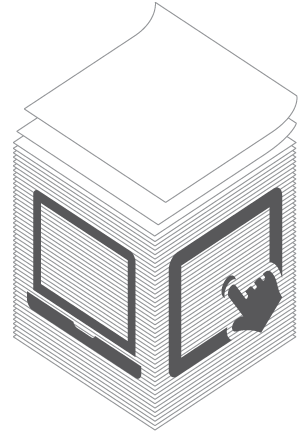The question is print dead? is superficial nonsense. The real question should be: What is print, and why should we care?
Print is everywhere, and is likely to continue for many, many years. Putting oil-based ink on ground-up trees may decline,* but it will be replaced by other printing methods like toner or inkjets lot more often than by electronic facsimiles. Radio was changed (but not eliminated) by television. Similarly, print will be changed by digital media and new business models.
Many of the businesses we associate with print are in distress. The golden age of high demand and limited supply of mass-produced printed materials is over. Large printing companies that were based on selling mass quantities of print are under siege, to put it mildly. Surviving printers are either in a race to the bottom selling a commodity for the lowest possible price or are looking for ways to redefine their businesses. In both cases, the process of putting text and images on a sheet of something will endure.
Full disclosure: I love the print medium; I always have. My fingers are no longer stained black, and my paper cuts are new few and far between, but I still smile when I experience that new book smell, or hear the rhythmic roar of a printing press. Every time some media pundit declares that print is dead, I wonder how many times a day he has read a sign, opened a package, put on clothing with a label, clicked print from their PC or tablet, read a bus schedule, handed out a business card… Well, you get the idea.

Change is a good thing. Digital media has great potential, but more so when used with print rather than as a replacement for it. Print can provide a stable snapshot of a particular story or idea, while digital media can show parts of that story or idea while its still in flux. Both perspectives are important.
As the physical process of printing becomes more automated more of a commodity and less of a personal service printing companies are looking for new ways to add value to what they offer. The trouble is that many are just talking; few are doing it. Very few are combining print and digital media in ways that live up to their full potential.
So, in the next series of blogs, we will explore some of the ways that companies formerly known as printers can combine their sense of craft and personal service, their manufacturing know-how, and the potential of new media and information technologies, into a long-term business.
Print is not dead, nor is it just rest in. It just has a way more complicated life than we ever imagined.
–John Parsons
* …or not. Paper from managed fiber sources is probably one of the most sustainable media we have. Coal-based power for digital media is not.
